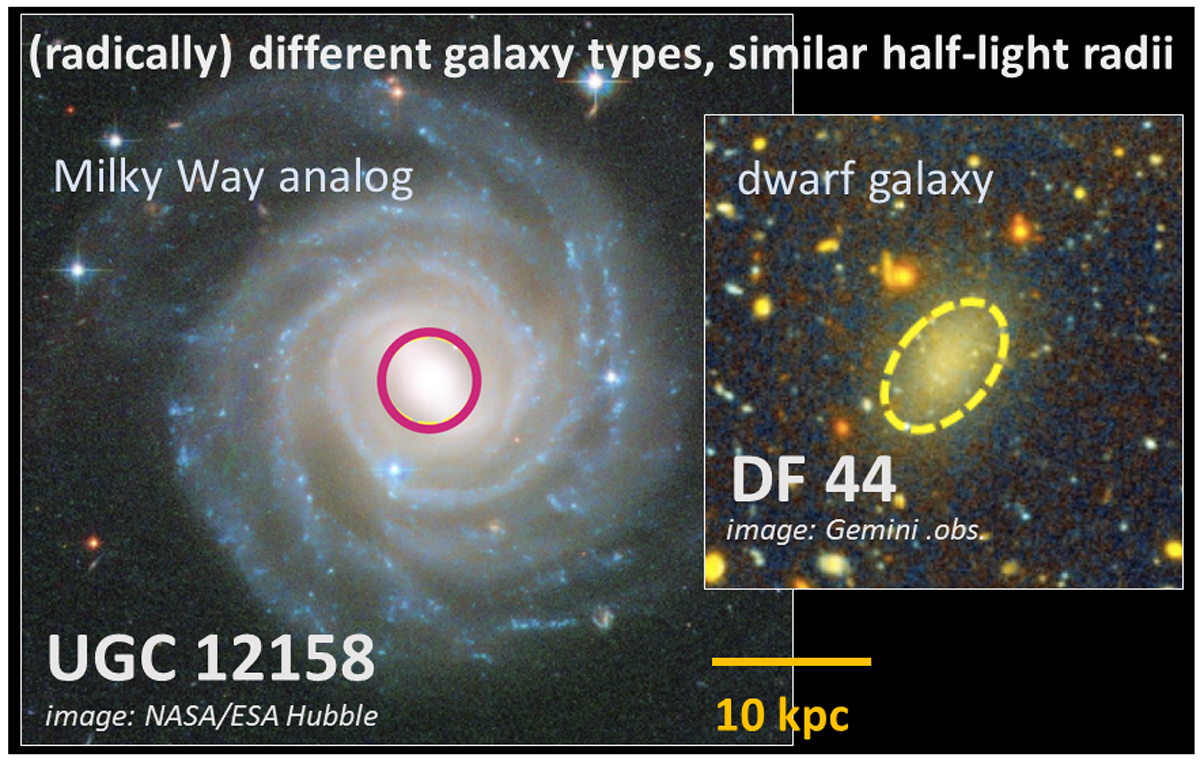Fig. 1.

Download original image
Visualisation of the problem with using effective (or half-light) radii as a size definition. A massive Milky Way-like galaxy (left) and an iconic low surface brightness, low mass dwarf galaxy (DF44; van Dokkum et al. 2016) (right), frequently thought to be as extended as the Milky Way, are shown at the same physical scale using images of similar sensitivity. In spite of the approximately four-orders-of-magnitude mass disparity, both of these galaxies have a comparable half-light radius (re; colored contours), partly explaining the large scatter in the re−mass relation and demonstrating that conventional measures of light distribution can be deceptive characterisations of total galaxy extension (Chamba et al. 2020). Thus, re may not be ideal to trace the environmental impact on size and its dependance on light concentration explains the lack of consensus in the literature.
Current usage metrics show cumulative count of Article Views (full-text article views including HTML views, PDF and ePub downloads, according to the available data) and Abstracts Views on Vision4Press platform.
Data correspond to usage on the plateform after 2015. The current usage metrics is available 48-96 hours after online publication and is updated daily on week days.
Initial download of the metrics may take a while.


